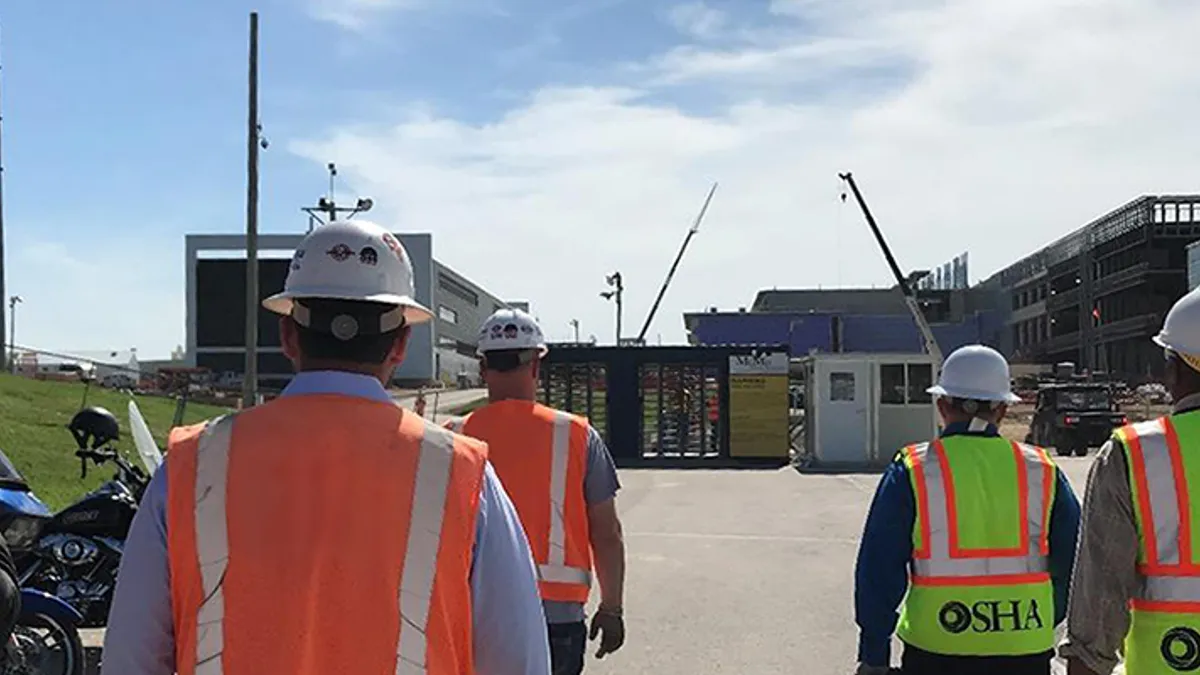Although Sarasota, Florida-based Crown Roofing has been subject to multiple OSHA inspections on its project sites during the last four years, company executives say they are not completely at fault.
The firm has contested the more than $500,000 in fines it has received since 2017 for failure to provide adequate fall protection for its employees. In an interview with NBC2 News last month, Crown Roofing Safety Director Aleksey Mendez said the incidents occurred because some employees were not obeying company safety rules.
He told a reporter that the company believes it is being unfairly targeted by OSHA, adding that it spent more than $1 million dollars last year to provide safety training for its employees, particularly those working on roofs.
"We train our workers on the safety program and provide the necessary equipment for them to work safe," Mendez said. "The notion that Crown Roofing does not care about employee safety is not only factually incorrect but intellectually dishonest. To keep fining the employer for actions that are [wittingly] done by the employee is not making them safer."
Lack of compliance
The Crown Roofing case raises interesting questions: What if a contractor has trained its employees on safety rules and a few workers simply refuse to follow procedures? Is the employer still responsible?
As it turns out, this could be considered employee misconduct, which can be used as defense against an OSHA violation. In fact, while the vast majority of OSHA standards deal with employer responsibilities for workplace safety, section 5(b) of the Occupational Safety and Health Act of 1970 requires employees to comply with jobsite safety rules and regulations.
But to mount a successful defense against an OSHA citation using employees’ lack of compliance as the basis, employers need to make sure they’ve incorporated four distinct elements into their safety policies, said Edwin G. Foulke Jr., partner in the Atlanta and Washington, D.C, offices of law firm Fisher Phillips and former assistant secretary of labor for OSHA under President George W. Bush.
- The first part, Foulke said, is to provide employees with a written policy that outlines general safety policies and procedures and those that deal with the alleged violation the employer is contesting.
So, for example, if an employer is fighting an OSHA citation issued after an inspector observed an employee not wearing adequate fall protection equipment, the company must be able to point to one of its written regulations showing that the employee was required to wear it.
- The second part is training. Employers, Foulke said, must educate all employees on its safety policies and procedures and then have them sign a statement affirming that they have received the training.
- The third part is a system of verifying that the rules are being enforced. This is usually accomplished, Foulke said, by documenting the visual observations made by the contractor’s staff.
For example, the foreman might make several passes around the job each day to make sure employees are following the rules, while the superintendent might make two trips and the project manager one. They must put their notes from these inspections in writing and maintain them as part of the job record.
- Last, Foulke said, is written documentation that proves employees are routinely disciplined when they violate the rules. Discipline according to company policy is important, Foulke said, even if the employee is injured as a result of his or her actions.
“There is case law that says if you don't discipline the person who was observed [committing] the violation by the OSHA inspector, then you don't have that [employee misconduct] defense.”
Preventing violations
Most large construction companies have these types of procedures in place. At St. Louis-based McCarthy Building Cos., said corporate vice president of safety Kevin Maitland, the disciplinary process entails three steps.
We expect our workers to follow safe work practices, and those performing work in an unsafe manner will be disciplined or terminated.

Kevin Maitland
Corporate vice president of safety, McCarthy Building Cos.
After a first offense, the company issues the worker in question a written warning. Before returning to the jobsite, the employee is also required to attend the same mandatory safety orientation session — including the exam — that he or she went through when first starting work at McCarthy.
The second breach will earn the worker a two-day suspension without pay and another orientation session. A third safety violation requires that the worker be barred from working on any McCarthy project for at least 12 months.
In cases of “imminent-danger,” violations like exposing oneself or others to a fall by not using proper personal protective equipment, Maitland said, the company could accelerate the disciplinary process by moving directly to a second- or third-step action even for first offenses.
"We expect our workers to follow safe work practices, and those performing work in an unsafe manner will be disciplined or terminated,” Maitland said. “This policy applies to both management and field workers across the board.”
If an employer has followed and performed the four steps correctly, Foulke said, and OSHA is presented with the proof, then the chances are that the agency will either withdraw the citation or an administrative judge will throw it out.
Criminal charges
But while the employee misconduct defense can be used to successfully fight OSHA citations, that argument could lose credibility and effectiveness if used too often, said attorney Phillip Russell with Ogletree Deakins Nash Smoak & Stewart in Tampa, Florida.
You can’t use a tight hiring market and a good economy as the reason you cannot enforce the safety rules.

Phillip Russell
Attorney, Ogletree Deakins Nash Smoak & Stewart
“If this is happening over and over again,” he said,” the defense becomes weak and irrelevant.” This is especially true in a high-risk trade like roofing, where the dangers are wellknown, and employers in that business are under pressure to make their jobsites safer.
If, in fact, an employee consistently breaks the safety rules, Russell said, the answer might be termination, even though it’s hard to find qualified tradesmen these days. “You can’t use a tight hiring market and a good economy as the reason you cannot enforce the safety rules,” he said.
While there is no mechanism for OSHA to issue a citation to employees who refuse to follow company safety rules, said attorney Benjamin Briggs, partner in the labor and employment department at Seyfarth Shaw LLP in Atlanta, they can be charged criminally in some cases.
One such situation is if an employee learns of an impending OSHA inspection and provides advance notice of it. "Under those circumstances,” he said, “an individual employee can be penalized financially and even imprisoned.”
Another scenario, Briggs said, is when an employee knowingly makes a false statement to OSHA during the course of an inspection. This can also leave the employee with the prospect of steep financial penalties and potential jail time.
Workers can also be criminally charged, he said, if their willful violation of a standard results in a fatality. In these cases, in addition to incarceration, the business can be penalized up to $500,000 and the individual up to $250,000.
Avoid being a target
Construction sites are more vulnerable to inspections than other industries because the work takes place outside and often is in plain view of those passing by, unlike work that happens in the relative privacy of a factory floor.
“So, if an OSHA compliance officer is driving by a construction site and sees somebody working at [a certain] height without fall protection or sees somebody in a trench that doesn't have a trench box, they are going to stop and have a conversation,” Briggs said. “And they might start an inspection under those circumstances.”
But what about claims that OSHA is unfairly targeting one employer with multiple, consecutive inspections, along with a slew of citations and fines?
“If you have OSHA repeatedly showing up on your jobsite, figure out why,” Russell said, “and do what you can on your jobsite … to show them that you take [potential violations] seriously.”
If all violations have been addressed, and the agency still continues to make what seems to be an unreasonable number of inspection visits, he said, then there are some remedies, like escalating the issue up the OSHA ladder, all the way to Washington, D.C., if necessary.
“But I can't go make an argument to the agency that you take it seriously if you're having problems on your jobsite,” Russell said. “And, if they're showing up, and they're finding things, that's on you. That's not on the agency."




















